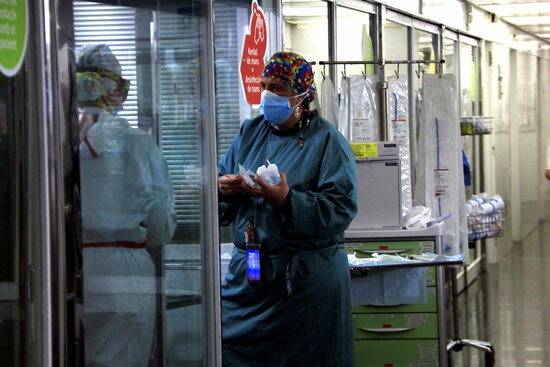Covid-19 patients in intensive care are younger and becoming sicker faster
Barcelona's Hospital del Mar says 30% of those hospitalized for coronavirus end up in intensive care - before the UK strain this figure was 20%

The Covid-19 patients that end up in ICU beds are now younger and their condition seems to become more serious more quickly than before the outbreak of the UK strain.
This is the conclusion reached by Barcelona's Hospital del Mar, after having observed the trends seen in those hospitalized there with the virus.
The head of the intensive care unit in the institution, Doctor Joan Ramon Masclans, told the Catalan News Agency (ACN) that it only takes on average 3 or 4 days until a hospitalized patient whose symptoms are serious ends up in an ICU – last year, the average was around a week.
He added that the age of the most serious patients has decreased in the past few months, with 40% now being under 60.
The vaccination being focused on elderly people and those especially at risk of developing serious symptoms is considered to be the main reason for this new trend.
The other main difference compared to the first months of the pandemic is the fact that now around 30% of those in Hospital del Mar with coronavirus end up in intensive care, and this has even peaked at 40% – this is a much higher share in relation to previous waves, when the figure was below 20%.
This, according to Masclans, coincides with the outbreak of the UK strain, which is now the dominant one in Catalonia, but "it cannot be confirmed as the cause yet."
"The only arising circumstance is the British strain, which was originally said to be more contagious but not necessarily more serious," said the doctor. Yet, he said that they do not have an alternative explanation for why more patients need intensive care. "Maybe due to the strain, or due to the fact that certain people might be more prone to developing swellings, or maybe there are genetic reasons," he said.
Patients admitted to ICU spend about 2 and a half weeks there, although some have stayed there much longer. Indeed, he explained that a patient brought into the facility during the second wave (October-November 2020) was only just discharged last week.
Concerned about ICUs
Hospital del Mar’s observations are compatible with the overall figures of ICUs coming from the health department daily updates.
Indeed, the pandemic has stabilized for the moment and transmissions are no longer skyrocketing, but as was not the case in other waves, the numbers in intensive care units are not decreasing: for most of April, they have been more or less at 500.
Far from the first wave’s 1,529 patients, the second peaked at 587 and the third, at 731.
Both the second and third waves brought a surplus 400 patients into ICUs each, which could result in putting too much pressure on hospitals if it were to happen now. "We are very concerned because if we face a new wave, the available space is automatically smaller, if we already start with 500 cases," said Masclans.
He warned that the public cannot lower their guard even if authorities decide to ease the restrictions soon because hospitals are struggling to cope – if the figure reaches 600 patients in intensive care, other medical appointments have to be postponed.